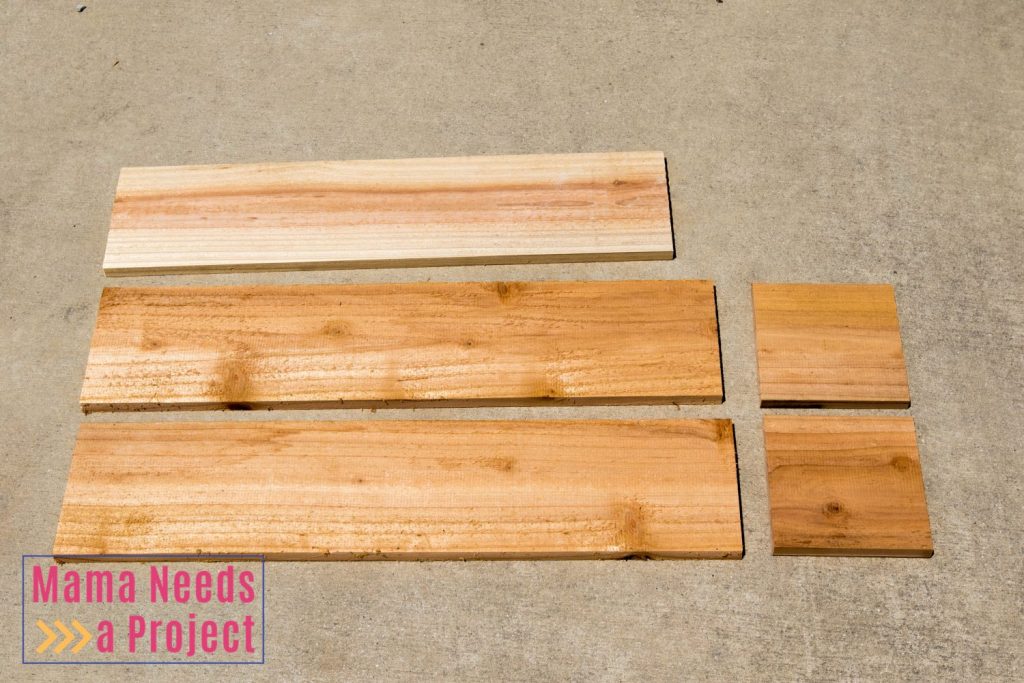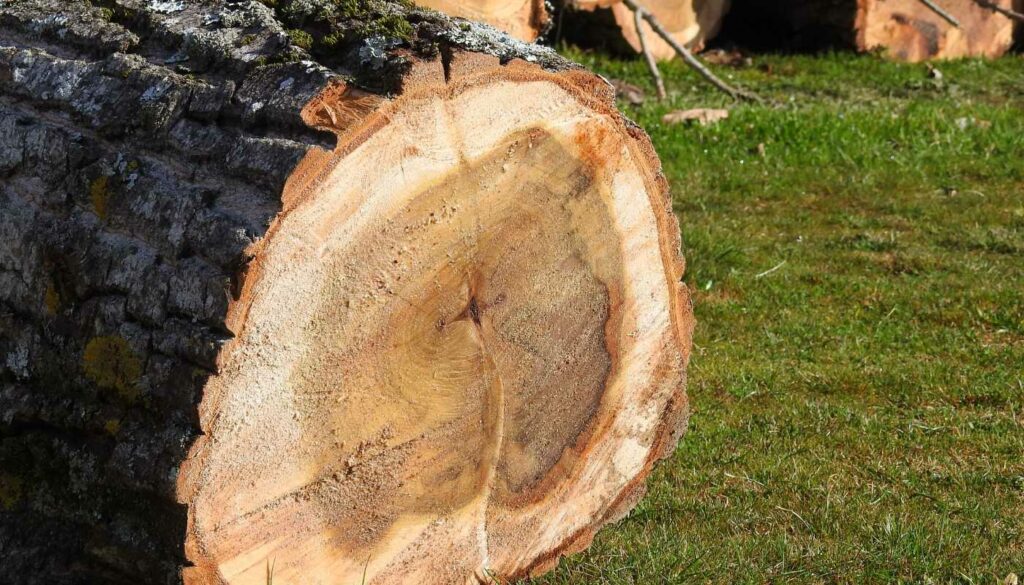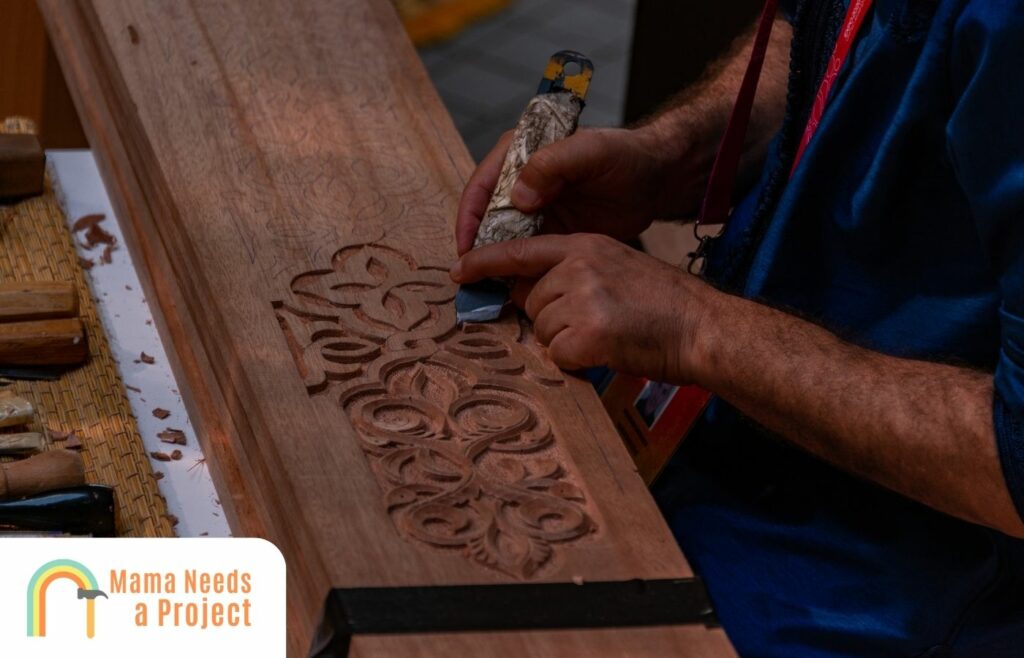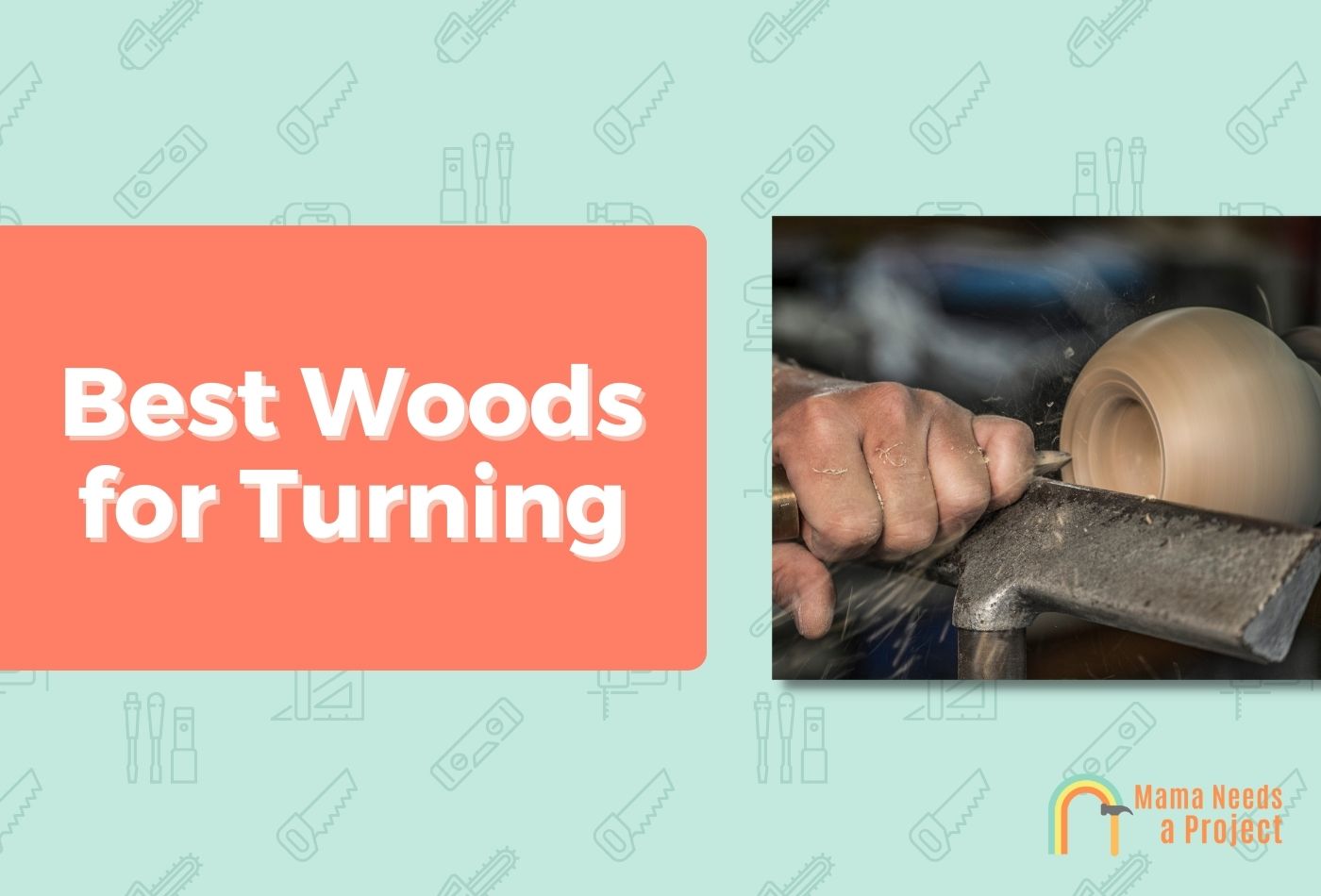15 Best Woods for Turning (2024 List)
I love the look of wood turned on a lathe, and I’ve found that some types of wood are better than others, especially for beginners.
In this guide, I’ll help you find the best wood for wood turning and learn about the different types available. I’ll also share some tips for beginning woodturning to help get you started with your wood lathe projects. Let’s dig in!
- The best woods for turning include ash wood, birch wood, cedar wood, cherry wood, and more.
- You can start by practicing with easy woods like pine and cherry until you’re more experienced and move on to denser woods.
- To make things easier, you’ll want to use a greenwood that hasn’t had the chance to dry out yet.
Best Woods for Turning
1. Ash Wood
Ash is a hardwood, and it’s ideal for turning, but you’ll need sharp tools if you plan to use this wood. It’s often used in baseball bats and furniture because it has ideal strength-to-weight properties.
Ash has a straight, uniform texture and is well-known for being shock resistant, which is why it works so well for things like spindles, tool handles, and sporting equipment.
If you’re choosing between a wood for woodturning, you can’t go wrong with Ash.
2. Birch Wood
Birch is widely used as a building material, but it’s not the first type of wood that people think of when they are using a wood lathe. However, birch is affordable and easy to find, and it’s a softer wood, making it one of my favorites for beginners.
Because the finished product is strong and durable, birch is a good wood for rails, chair legs, and spindles. This beautiful wood is light-colored with dark brown streaks and takes a finish well.
3. Boxelder Wood
One of the nicest features of boxelder is the occasional pinkish colored streaks. It has a unique grain pattern and raspberry like color that is perfect for showcasing in projects like lidded boxes and bowls.
When boxelder dries, it becomes very hard, so it’s best to turn it when it’s green. Otherwise, you’ll need extremely sharp tools to handle boxelder wood.
4. Cedar Wood

Cedar is a softwood and it’s scent makes it an excellent choice for dressers and other types of furniture because it is naturally resistant to insects.
The two types of cedar, red and white, are both good for turning, but they are quite different in appearance. White cedar turns more easily than red cedar, which has a lot of silica that can be hard on your tools.
If you’re constructing outdoor furniture – you can’t go wrong with cedar. And you can always use one of these amazing cedar stains to give your wood even more protection.
5. Cherry Wood
Cherry is one of the most popular woods for turning bowls. It’s relatively soft, which makes it easy to turn and it changes to a dark color when finished which continues to darken with age.
The fine grain of cherry can be sanded down to a smooth finish, making it a popular choice for wooden bowls. Cherry is also commonly used in flooring and cabinetry.
6. Chestnut Wood
Like many species of trees, there are several subspecies of chestnut. One of the most favored chestnut species for turning on a lathe is Horse Chestnut.
Chestnut is known for its ability to hold moisture, which is why it’s prized for turning bowls and platters used for storing fruit. However, this also leads to one of the main disadvantages of chestnut, which is that it tends to move when it dries.
7. Cypress Wood
Cypress is another wood that’s perfectly suited for beginner wood turners. It’s harder than the softest woods like pine and cherry, but it’s still easy to work with and sand. In addition to being used for wood turning, cypress is commonly used for carving, engraving, and pyrography.
Cypress is expensive because it’s a highly sought-after wood due to its versatility. Cypress trees are a lot slower growing than other types of trees, and the demand makes them hard to come by. That said, Cypress is great for wood turning that you won’t regret.
8. Elm Wood
There are both soft and hard varieties of elm, and if you’re a beginner, you should go with softwood elms like American Elm and Red Elm. American Elm is a beautiful wood that moves some as it dries but is resistant to cracking and splitting.
Although categorized as soft, elm is still a tough wood with an interlocking grain that makes it a top choice for boxes and pens. It’s also used for making hockey sticks and other sports equipment.
9. Hickory Wood
Hickory is one of the best hardwoods for turning because of its beautiful color and strength. It’s naturally colored a light to medium brown making it one of the more versatile woods you can choose from.
It’s also one of the hardest woods that grow in North America, which makes it popular because it’s easier to come by than other woods that have to be imported.
Hickory is not the easiest turning wood because it has a tendency to split as it dries, but that doesn’t make it a bad option. It’s also fairly easy to sand hickory and add stain making it perfect for a variety of projects.
10. Maple Wood
Maple is one of the most popular woods available, and it’s used for virtually everything ranging from desks, to shelves, and more.
It’s an excellent wood that stains nicely, and you can use a variety of colors because it’s such a light-colored wood.
Maple is well known for its grain pattern and is stable enough to use for almost any type of project. Since it’s not extremely rare, it’s a popular choice for both novice and experienced woodturners.
11. Pine Wood
Pine is one of the softest woods available for turning and is probably the least expensive wood you can find.
It’s easy to shape, but one of the problems you can run into is the sap. Some pine wood is so sappy that you have to stop and clean your tools many times while you work which can be annoying.
12. Poplar Wood

Poplar is one of the fastest-growing deciduous trees you’ll find, so it has a soft nature compared to other hardwoods.
However, it’s somewhat difficult to stain because the wood is so porous, which is why I recommend you use a wood conditioner before they attempt to stain it.
This is also a cheaper wood that’s great for beginners because it’s relatively soft.
13. Sycamore Wood
On the hardness scale, sycamore is one of the softer hardwoods, making it easy wood to work with.
Sycamore wood is great for turning bowls, and because it doesn’t give off any weird flavors, it’s a top choice for wood-turned kitchenware.
14. Walnut Wood

Sharpen your tools before you try to use walnut because it’s one of the hardest woods you will find. In fact, it’s so hard that it can be difficult to sand.
Because walnut is a high-quality wood, it’s more expensive than other woods for turning so it’s not a great wood to practice on, but once you get the hang of turning wood, walnut is so beautiful that you’ll want to make something with it.
15. Yew Wood
Yew is a dense wood, and even though it’s categorized as a softwood, it’s one of the hardest conifer species you can get. It has unique grain patterns, and it’s resistant to moisture making it an interesting choice for furniture.
Strong and heavy, yew wood is in high demand. Because it’s rare, it’s more expensive than many other types of wood for woodturning – which is something worth considering.
Wondering if you are turning wood correctly? Check out the video below!
Best Exotic Woods for Turning
Working with exotic woods for turning is a great goal to have, but until you’re more experienced at woodturning, you probably won’t want to waste your money because they are extremely expensive.
The most popular types of exotic hardwoods for turning are rosewood, ebony, and makore. Many types of exotic hardwoods are available for online purchase, and you can have them shipped directly to you but keep in mind, they aren’t cheap.
Different Types of Wood for Turning
Hardwood: Pros and Cons
Hardwood trees are slower growing, which makes the rings close together. This in turn makes them more suitable for turning because they are more stable and less likely to crack and split during the process.
On the downside, because hardwoods are slower growing and are higher in demand, they are more expensive and can be more difficult for beginners to work with.
Softwood: Pros and Cons
Softwoods grow quickly and are less expensive. They aren’t as strong or durable as hardwoods, but they are easy to turn and are great for practicing when you’re starting out with wood turning.
Greenwood (Wet Wood) vs Dry Wood
When you start looking into different types of wood for lathe work, you’ll hear a lot of talk about greenwood and dry wood. Greenwood is preferred over dry wood for turning for a few different reasons.
But what exactly is greenwood?
Greenwood is simply wet wood that has just been cut and hasn’t dried out.
One of the best ways to obtain free greenwood is to drive around after a storm. When you find someone with a limb down in their yard, ask them if you can take the wood in trade for cleaning up the mess.
Greenwood is easier to sand, cut, and it’s less dusty than dry wood. However, some types of wood, like exotic hardwood, are unavailable as greenwood.
About the only disadvantages of working with greenwood are that it can clog up your tools, and the sap can be sticky. You should also be prepared to have it crack and move on you as it dries.
Tips for Beginning Wood Turners
Start Simple
Starting simple means choosing easy projects until you get the hang of woodturning. It also means keeping it simple when it comes to the equipment you purchase. There are many great wood lathes for beginners that aren’t overly expensive that I recommend and you can also find some mini wood lathes that are easy to use.
Selecting Wood For Turning
Select easy and inexpensive woods for turning. Pine and cherry wood are the easiest for beginners to turn, and they won’t break your pocketbook. Once you get the hang of working with these woods, you can try your hand at other types.
Remember, the best wood for turning is the one you’re most comfortable with!
Use Sharp Tools
It’s hard to adequately stress the need for sharp tools. You’re more likely to make mistakes and get frustrated if your tools aren’t sharp, and some types of wood are impossible to cut with dull tools. Certain types of wood will dull your tools faster than others, too. So if you do plan to turn a very hard wood – be prepared to sharpen your tools often.
Best Safety Practices
No matter what type of DIY wood craft project you’re doing, don’t take safety shortcuts. Thousands of DIYers end up in the hospital emergency room each year, and nobody is immune to accidents. Protect your ears, eyes, and hands before anything else!
Final Thoughts
Woodturning is a fun hobby, and your projects will make great gifts to give family and friends during the holidays. Whether you want to make wood bowls, musical instruments, or other wood crafts – there are many woods you can use.
The best wood for turning will depend on your exact project, but I highly recommend going with a hardwood like ash or maple for more experienced wood turners.
If you’re just getting started, I recommend going with a soft wood that’s easier to handle like cedar.


